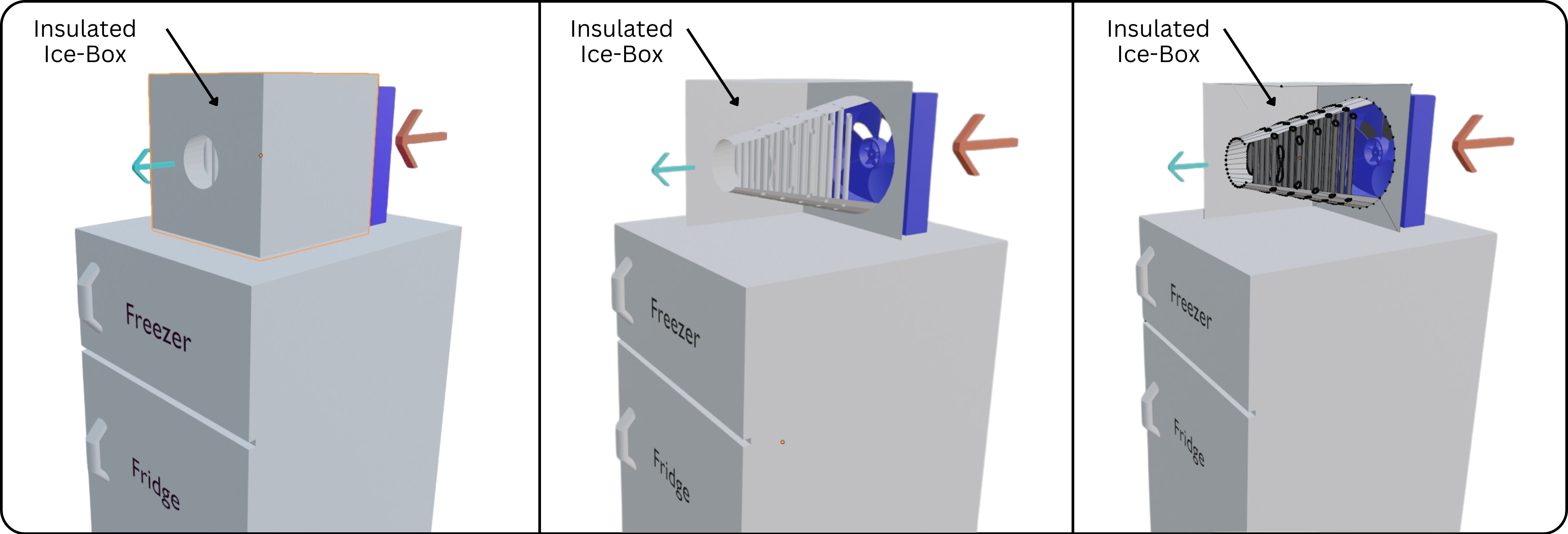Welcome to IceFAC
The Window Freezer + air cooler (abbreviated as F-AC) is a fridge-freezer that utilizes part or all of the freezer compartment to cool indoor air during summer. It operates by freezing water at night, when outdoor temperature is lower, and using the stored ice to provide cooling during the day.
What Makes IceFAC Unique?
- Saves electricity by using off-peak energy at night.
- Has a larger external fan coil unit on its top, to more quickly cool indoor air.
- Can cool faster than conventional window or portable air conditioners.
- Portable and versatile for year-round use.
How It Works
- At night, the F-AC freezes water inside a Insulated Ice-Box, taking advantage of lower ambient temperatures to save electricity.
- During the day, the frozen water melts, releasing stored thermal energy to cool indoor air.
- A top-mounted external heat exchanger and air fan (or a fan coil unit) transfer the cool air into the room.
- Like conventional window or portable AC units, the F-AC expels heat outdoors via its condenser.
- Instead of relying solely on water-ice, alternative Phase Change Materials (PCMs) can be used for improved efficiency.
- During summer, the larger external insulated water-ice Box may be positioned on top of the unit to cool air and save space.

The 3 images above, display an icebox sitting on top of a window refrigerator-freezer (F-AC) with the back of the F-AC exposed to the outdoors. F-AC has a (optionally removable) larger external fan coil unit mounted on top of it, to more quickly cool indoor air. A cone shaped heat exchanger (a cone shaped hole for air passage) is inside the icebox. The vertical lines are copper pipes containing water-ice to cool the air passing through the cone inside the icebox. The blue square is an air fan blowing hot air into the cone shaped hole inside the icebox. The cone shaped hole in the icebox acts as a heat exchanger. At night when temperature is cooler than day, the freezer freezes the ice in the icebox. During the hot days, the air fan (blue) blows hot air through the hole into the insulated icebox (heat exchanger). Cold air then exits the cone shaped hole and enters the home, cooling indoor space.